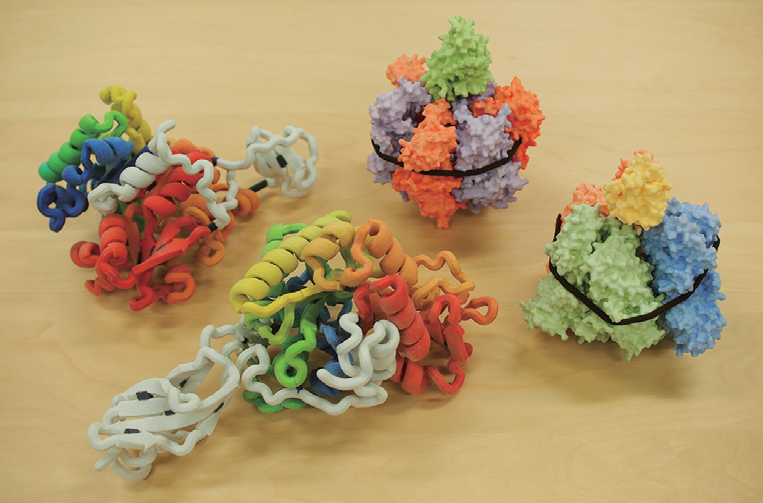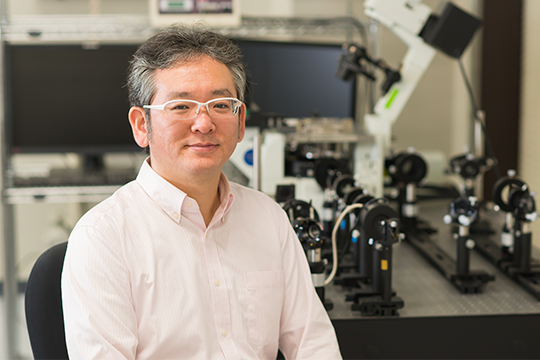Research Theme
Operational and Design Principles of Biological Molecular Machines
Keywords
Molecular Machines, Molecular Motors, Protein Engineering, Single-Molecule Analysis
Activity of life is supported by molecular machines made of proteins1). Protein molecular machines are far superior to synthetic molecular machines in many aspects. We elucidate operation and design principles of protein molecular machines.
1. Understand biomolecular machines: Molecular motors are representative of the protein molecular machines. Molecular motors generate mechanical forces and torques driving unidirectional motions from the energy of chemical reaction or the potential energy. We are studying linear2-8) and rotary motors9-11). Especially, we focus on new molecular motors such as chitinase3-5), cellulase2),6) and V-ATPase.
2. Engineer biomolecular machines: Many biomolecular machines have similar structures, implying same evolutional origin. AAA+ family is one of the representatives10). To understand their design principles, we engineer protein molecular machines by using saturation mutagenesis, robot-based automation13), hybridization14), and computational design.
3. Investigate functions and structures of biomolecular machines: Our study is based on state-of-the-art single-molecule techniques15-17). We are developing single-molecule methods such as high-speed and high-localization precision measurements with plasmonic nanoprobes. We also determine crystal structures of biomolecular machines by X-ray crystallography.

Protein molecular machines
Selected Publications
-
Iino R, et al., Chem. Rev. 120: 1-4 (2020)
-
Nakamura A, et al., J. Biol. Chem. 295: 14606-14617 (2020).
-
Nakamura A, et al., Nat. Commun. 9: 3814 (2018)
-
Visootsat A, et al., J. Biol. Chem. 295: 1915-1925 (2020)
-
Nakamura A, et al., PCCP 20: 3010-3018 (2018).
-
Nakamura A, et al., J. Biol. Chem. 291: 22404-22413 (2016).
-
lsojima H, lino R, et al., Nat. Chem. Biol. 12: 290-297 (2016)
-
Ando J, et al., Sci. Rep. 10: 1080 (2020)
-
Tsunoda J, et al., Sci. Rep. 8: 15632 (2018).
-
lino R, et al., Curr. Opin. Struct. Biol. 31: 49-56 (2015).
-
Ueno H, Minagawa Y, et al., J. Biol. Chem. 289: 31212-31223 (2014).
-
Iida T, et al., J. Biol. Chem. 2019 294: 17017-17030 (2019)
-
Visootsat A, et al., ACS Omega 5: 26807–26816 (2020).
-
Baba M, et al., PNAS 113: 11214- 11219 (2016).
-
Ando J, et al., ACS Photonics 6: 2870-2883 (2019)
-
Ando J, et al., Biophys. J. 115: 2413-2427 (2018).
-
Uchihashi T, et al., Nat. Commun. 9: 2147 (2018).



